Home / Resources
Resources
Discover a Wealth of BPM Knowledge and Expertise at BPMInstitute.org!

Change and Innovation in Service Oriented Enterprises
We are at an exciting crossroad bringing technology and business together, as never before. Global collaboration and emerging corporate cultures are creating a new type of innovative enterprise: one that is based on services. Service orientation is about culture, a new service-focused approach of doing business as the modus operandi. Service orientation is also about technology, a standard and effective way of connecting businesses. Enterprises can be empowered to live up to the potential of becoming dynamic, agile, and real-time.
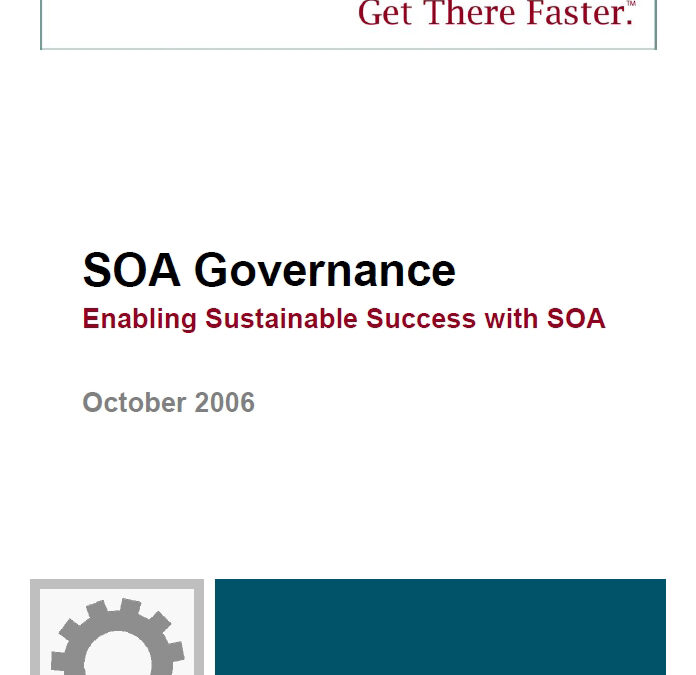
SOA Governance: Enabling Sustainable Success with SOA
Many companies are still in the early stages of SOA adoption and so the practice of SOA governance – and likely the concept itself – will be new territory for many IT professionals. And yet, if companies are to realize any meaningful and lasting impact from SOA, then governance is a fact of life that enterprises are going to have to become comfortable with. More than any other factor over the long term, governance will make the difference between SOA success and failure, and proficiency in governing the SOA environment will distinguish IT leaders from laggards.

SOA Requires a Disciplined Multi-Dimensional Approach
Bhaskar Chakrabarti, principal IT architect at JPMorgan Chase, addresses both tactical and strategic issues in the IT architecture in the financial services giant’s Treasury Services unit. In the tactical area, his group manages specific solutions and application architectural decisions.
Structuring BPM: Business Process Design or Evolution Technologies?
The buzz about business processes, how they should be designed and how employees should use them, is getting louder and more varied. Some vendors are striving to make business process design, implementation and improvement much easier. BEA, IBM WebSphere, Sun SeeBeyond, webMethods, and others are packaging comprehensive infrastructure solutions empowering business analysts as the designers and owners of business process.

Case Study: Applying Process Design Principles
Dan Madison is a principal in Value Creation Partners. He facilitates process improvement using lean, six sigma, reengineering, and continuous improvement techniques. Dan is the author of Process Mapping, Process Improvement, and Process Management.
Dan Madison has studied what a business process should look like for fifteen years. He studied what major corporations did in process improvement that made them successful and distilled his findings into design principles that anyone can use. He has come up with 38 design principles that apply to all business processes.
Dan Madison is a principal in Value Creation Partners. He facilitates process improvement using lean, six sigma, reengineering, and continuous improvement techniques. Dan is the author of Process Mapping, Process Improvement, and Process Management.
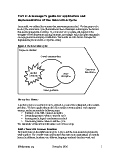
Applied Creativity and Value Discipline: The Innovation Cycle – Part 2
Part 2: A manager’s guide for application and implementation of the Innovation Cycle
Innovation is currently a hot topic in the executive suite and in business publications. Amid the buzz, managers are uncertain about how to reconcile the seemingly opposing calls for increased innovation and bottom-line productivity. As a result, when challenged to grow their businesses they often default to more familiar options, even if growth through innovation could be the best choice. We propose not only a truce between the creative and analytic sides of business, but also a highly valuable method for collaboration that builds upon the strengths of each to maximize the value of innovation investments.
Accelerating Innovation & Growth through Open BPM with SOA
Open BPM assumes there are no boundaries in creating, adopting, and improving innovative business processes. With an Open BPM strategy, business processes can now be designed and executed with more flexibility, using standards and best-of-breed functionality to deliver a tailored end-to-end process that is more closely aligned with corporate objectives. A successful Open BPM initiative supports the Business Process Lifecycle.

Creating a Customer Focused – Process Enabled Enterprise By Applying Business Process Management and Six Sigma Together
Creating a Customer focused – Process Enabled Enterprise requires a business process framework, established enterprise architecture, creating “real-time” business intelligence, and a link between continuous improvement projects and key business processes. Most businesses need to evolve from a bottoms-up Six Sigma (DMAIC) approach, to a strategic framework that will set the foundation for growth, accountability, and performance management.
Sustainable Business Rules: An Introduction – Part 3 of 3
Part one of this article provides an introduction to applying the concept of sustainability to business rules.

Innovation as a Business Process
The term “innovation” is being bandied about as the new holy grail in business. Yet, while innovative ideas are easy to develop; doing them is hard. Bruce Nussbaum, editorial page editor of BusinessWeek, offered advice for business leaders last year, writing, “Listen closely”.
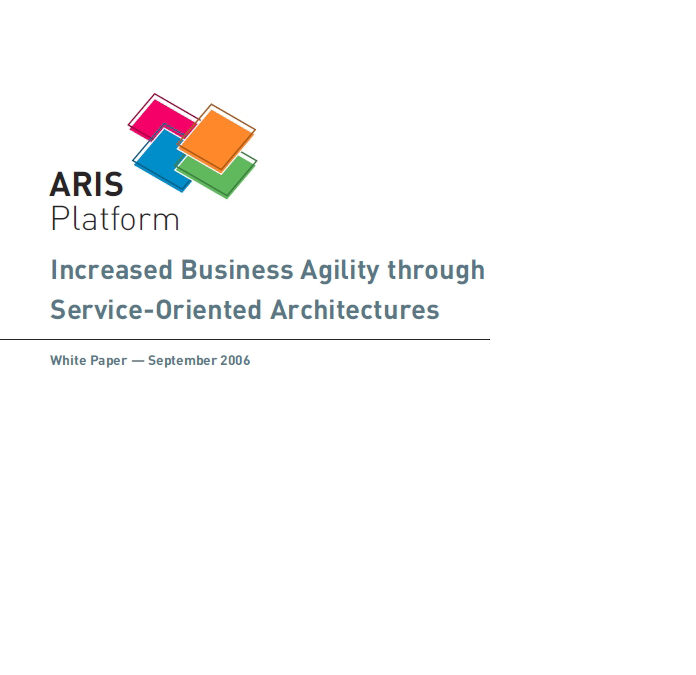
Increased Business Agility through Service-Oriented Architectures
Service-Oriented Architecture (SOA) is a hot topic, but what does it mean for your enterprise? Most SOA discussions have focused on the technical aspects versus the role of technology to support business processes. Business processes can be accelerated by using special process design and analysis tools, but there are often significant gaps when implementing the business processes to support the IT landscape.
This white paper illustrates how technical services can be derived from business processes and orchestrated through SOA.
Case Study: Your Project is Done- Now What? Sustaining Your BPM Efforts Beyond the Life of the Project
Nancy Bilodeau is a Senior Program Manager at Openwave in charge of corporate process initiatives. Prior to join Openwave, Bilodeau worked with PricewaterhouseCoopers, USi, A&G Consulting and MEI mainly as a customer relationship management consultant. Bilodeau developed an easy project methodology for Openwave that is helping them to improve the alignment of IT and business process resulting in better return on investment, process efficiency and organization effectiveness.

BPMS Watch: BPM Embraces Collaboration
BPM benefits such as enhanced operational efficiency and compliance derive largely from the way it breaks down routine office work into specific tasks performed in a prescribed order according to explicit rules. The process design assigns each task to some role or group, while administrators manage the mapping of individuals to those roles and groups at runtime. This allows the BPMS process engine to route tasks to users in the prescribed sequence and notify appropriate managers and supervisors when those tasks are overdue.
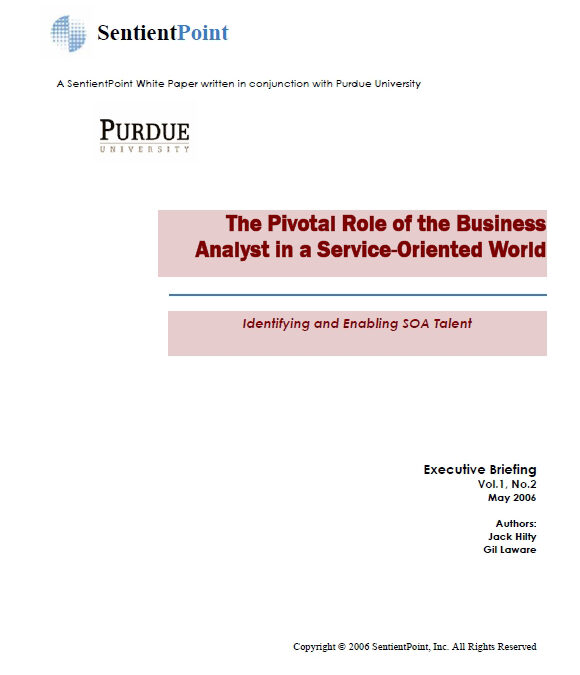
The Pivotal Role of the Business Analyst in a Service-Oriented World
As more organizations incorporate Web Services into their strategic plans, the value of Service Oriented Architecture (SOA) continues to grow. The Business Analyst will play a pivotal role in an organization’s success when they transition to SOA projects – a move that can drive significant business advantage. But, the Business Analyst role is one that must be expanded through new SOA skills to ensure that companies realize the results and ROI they expect.
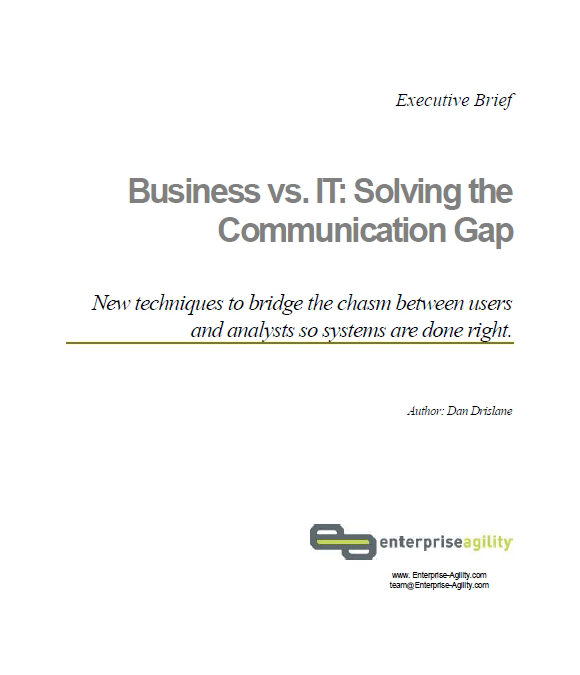
Business vs. IT
This paper focuses on solving the dissociation between business processes and business requirements. While a projects must have good analysis, pragmatic risk assessment, a sound business case and reliable measurement tools if it is to have any hope of succeeding, business processes and business requirements are inextricably linked to a company’s vision and the project itself. Closely coupling business processes and the business requirements of a new application are not only desirable, they are inherently critical. Business software applications are tools to aid business processes.
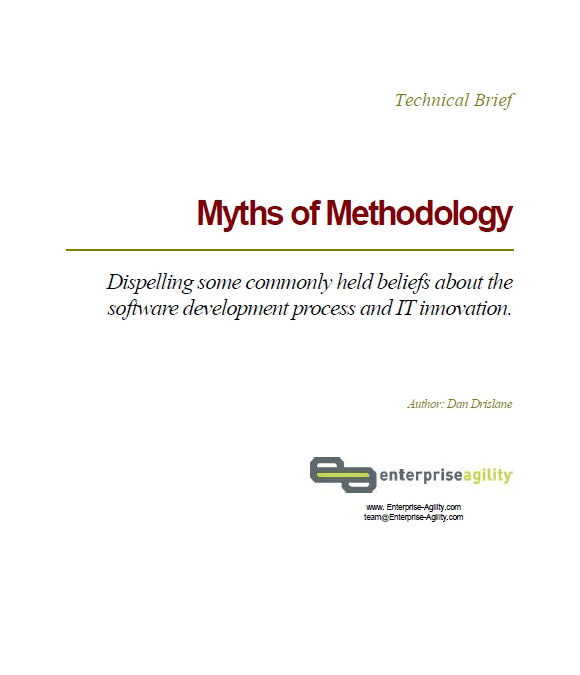
Myths of Methodology
This paper is about why software development methodologies don’t work and why they sometimes do, including a few ideas about how to turn around your own methodology efforts. Often, methodologies don’t work because managers and IT professionals hold onto beliefs, practices and organizational paradigms that no longer fit the modern software development organization and the processes that help support it.

SOA Demonstrates Broad Momentum
Service-oriented architecture (SOA) is gaining broad momentum throughout business applications that support all aspects of business operations, according to The Yankee Group 2005 U.S. Enterprise SOA Survey (see Figure 1). The survey of 306 IT executives...
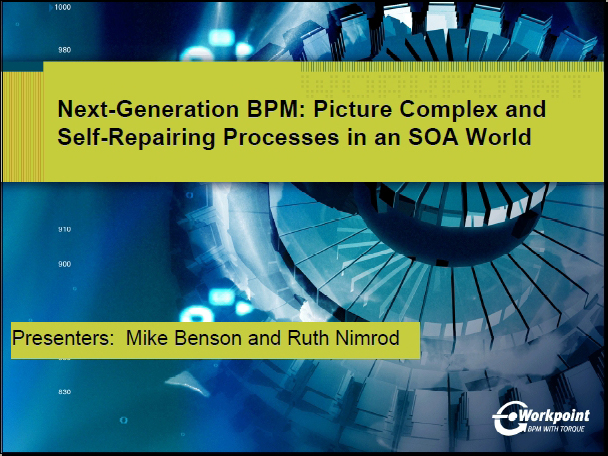
Next-Generation BPM: Picture Complex and Self-Repairing Processes in an SOA World
Today’s BPM users are asking for a seamless, expanded definition of BPM, now commonly referred to as BPMS, or BPM suites. Ironically, it is within this vision of horizontal expansion that something even more dramatic is taking place. Business Activity Monitoring has predictably given way to Business Event Management, which, teamed with BPM in an SOA world enables complex processing and process self-repair.
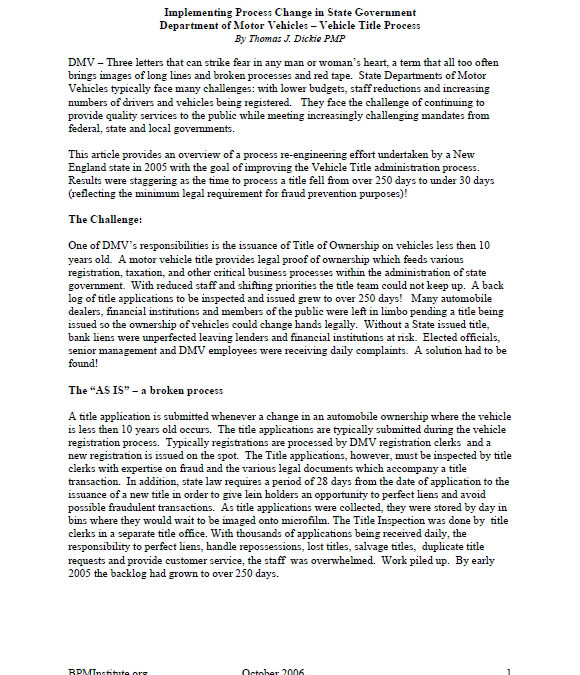
Implementing Process Change in State Government
DMV – Three letters that can strike fear in any man or woman’s heart, a term that all too often brings images of long lines and broken processes and red tape. State Departments of Motor Vehicles typically face many challenges: with lower budgets, staff reductions and increasing numbers of drivers and vehicles being registered. They face the challenge of continuing to provide quality services to the public while meeting increasingly challenging mandates from federal, state and local governments.
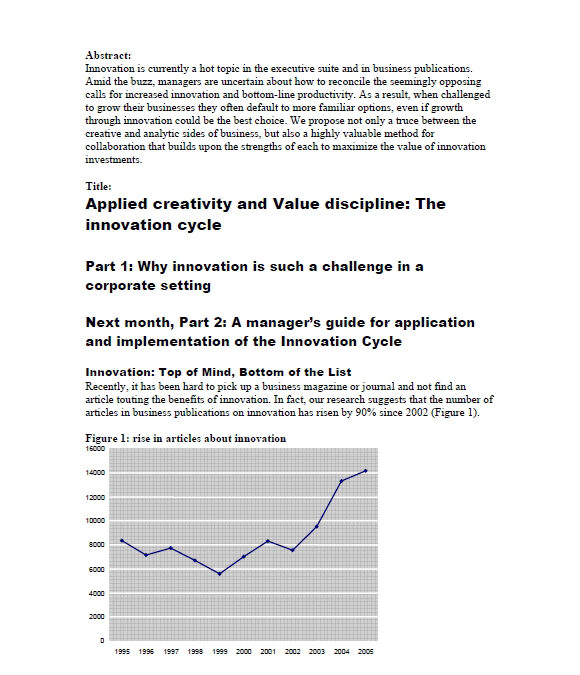
Applied Creativity and Value Discipline: The Innovation Cycle – Part 1
Part 1: Why innovation is such a challenge in a corporate setting













